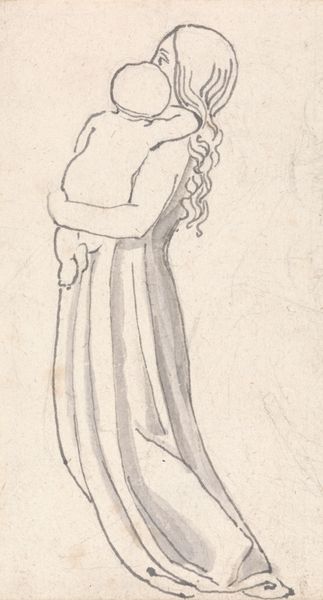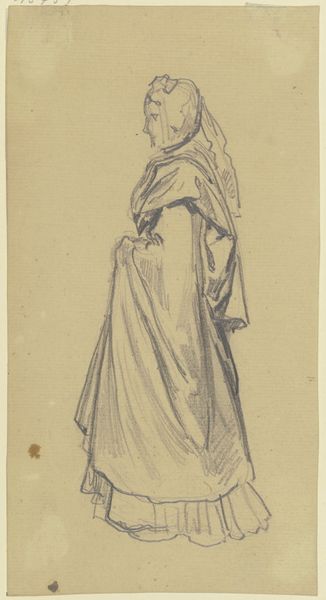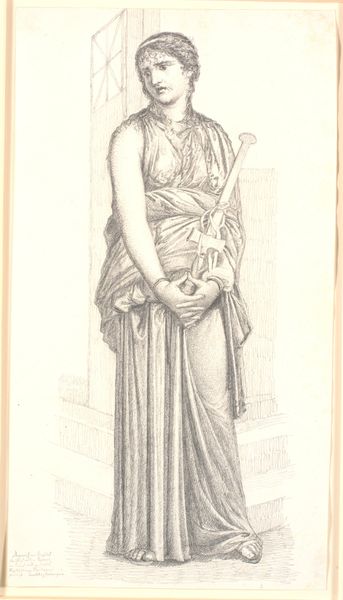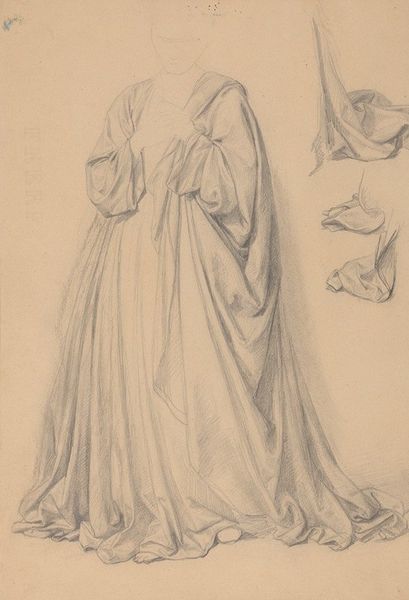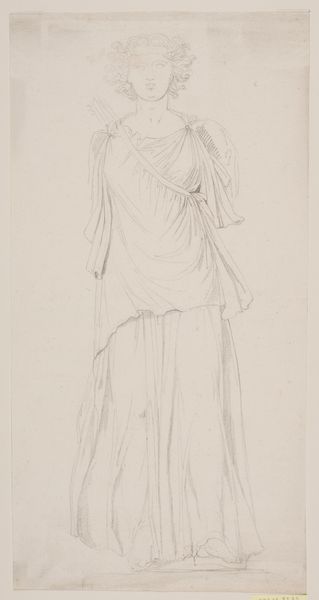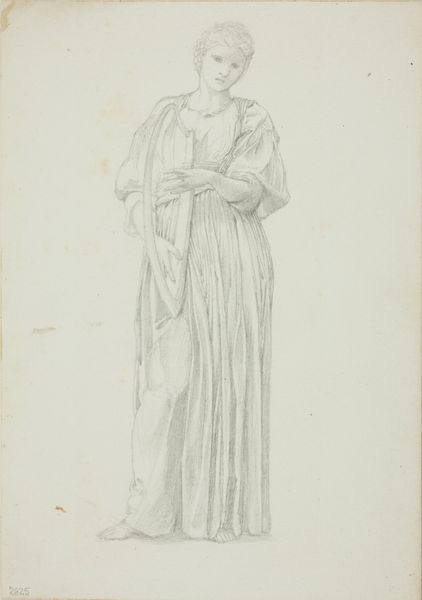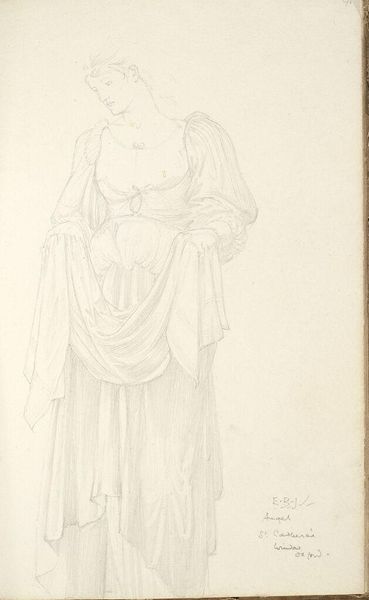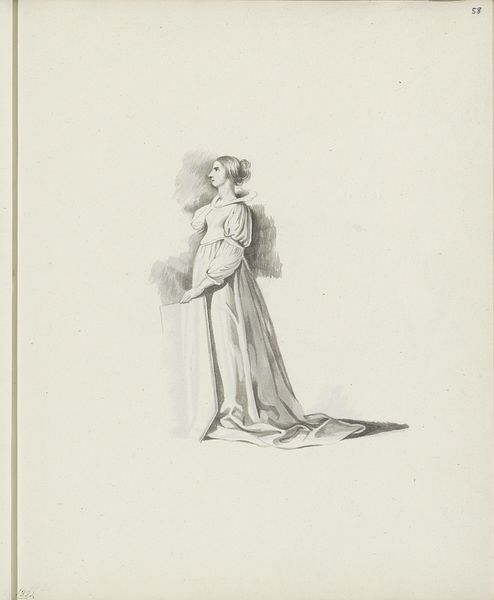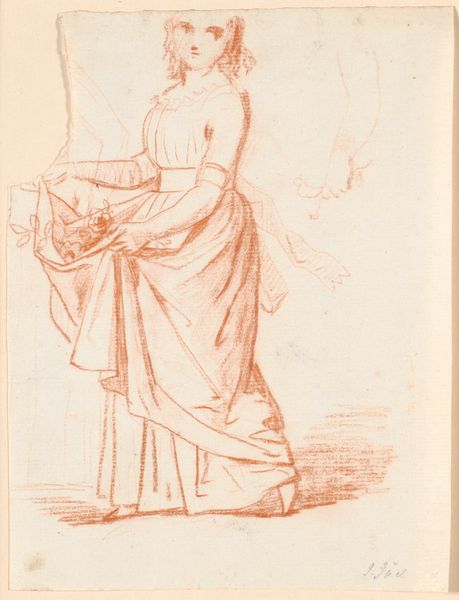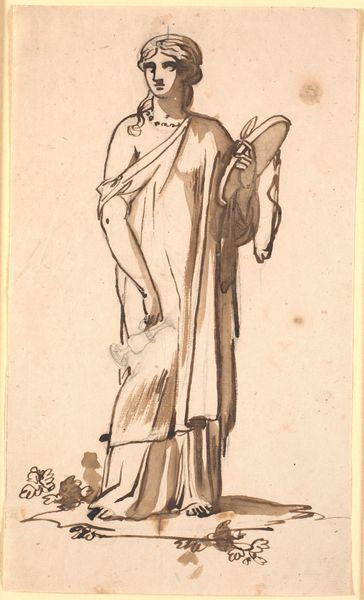
Gående kvindefigur i antik dragt, i profil til venstre. 1743 - 1809
0:00
0:00
drawing, pencil
#
portrait
#
drawing
#
imaginative character sketch
#
light pencil work
#
neoclassicism
#
pen illustration
#
pen sketch
#
pencil sketch
#
figuration
#
personal sketchbook
#
pen-ink sketch
#
pencil
#
sketchbook drawing
#
portrait drawing
#
sketchbook art
Dimensions: 155 mm (height) x 74 mm (width) (bladmaal)
Curator: Here we have "Gående kvindefigur i antik dragt, i profil til venstre" or "Standing female figure in antique dress, in profile to the left", a pencil drawing by Nicolai Abildgaard, created sometime between 1743 and 1809. Editor: It feels so delicate. The lines are incredibly fine, the washes subtle. It's mostly greyscale, save for the palest blush of color near her calf, lending it a sense of ethereal, fleeting beauty. Curator: Abildgaard was a key figure in Danish Neoclassicism, deeply invested in antiquity and its values. This drawing reveals that interest, showcasing his study of classical figures. Notice how the antique dress serves as a visual signifier. Editor: Absolutely. And the drapery; how the fabric clings and falls—it accentuates her form in that idealized, classical way. The artist clearly understood contrapposto. It lends dynamism, despite the muted tones and medium. Curator: The figure’s gesture, her arms crossed, suggests contemplation or perhaps reserve. Crossed arms have many potential connotations across history and cultures, but given the neoclassical context, stoicism and restraint come to mind. This sketch evokes a sense of calm, and perhaps, even vulnerability. Editor: Indeed, but it's also a study in line and form, a way of rendering a three-dimensional figure on a flat plane with almost scientific precision. See the light pencilwork for a figure placed behind, possibly showing earlier attempts at composition and dimensioning. Curator: Consider also the influence of the Enlightenment; Abildgaard sought to capture universal human ideals, to elevate the viewer through beauty and moral example. That informed not only the visual arts, but also theatre, literature, and even politics. Editor: The unadorned background emphasizes her form and pose, removing distraction to focus the attention entirely on the human figure and its idealized form. The simplicity and quiet grace are striking, almost modern, despite its adherence to neoclassical ideals. Curator: Reflecting on the drawing's cultural memory allows us to glimpse a historical vision, a longing for order and harmony inspired by classical ideals, that had broad implications for aesthetics and beyond. Editor: For me, its the sheer technical mastery displayed with such sparse materials that endures—a study of how so much can be evoked with what appears, deceptively, so little.
Comments
No comments
Be the first to comment and join the conversation on the ultimate creative platform.

